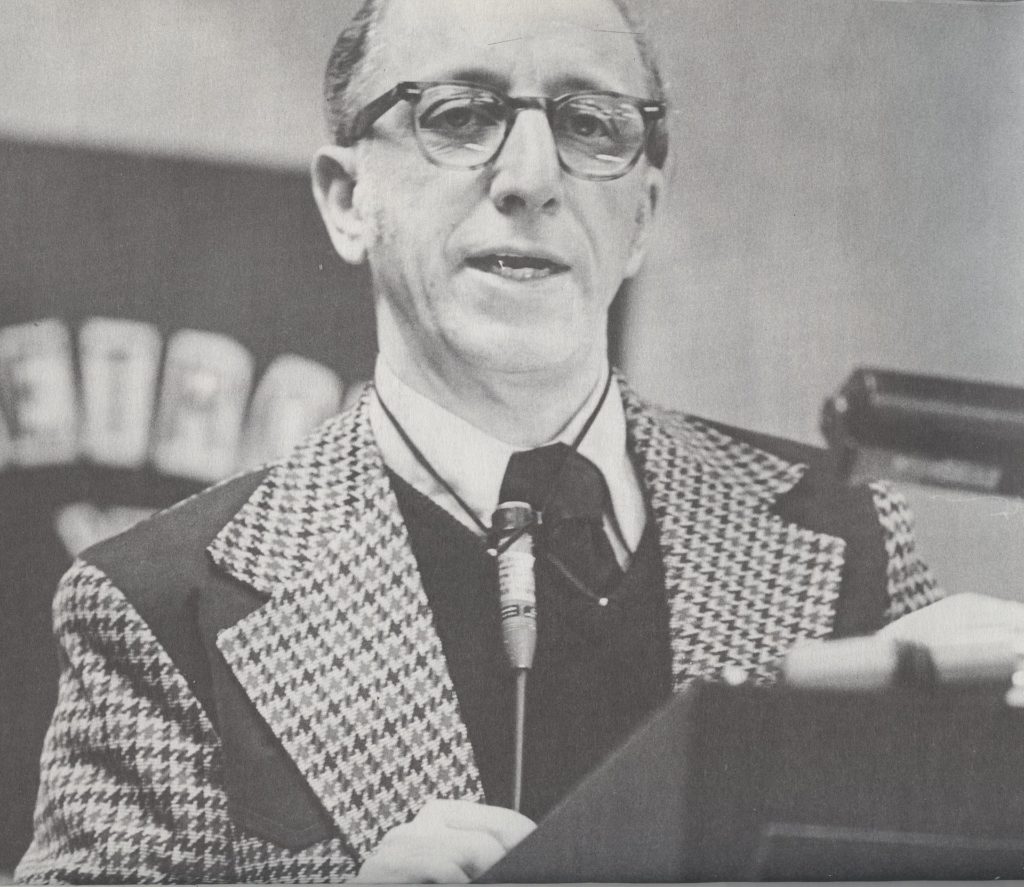
Ralph Baer in 1977, public domain
Ralph Baer was born in 1922 to a Jewish family in Germany. In 1938, he and his family immigrated to American to escape the growing persecution of Jews in Nazi Germany. In the U.S., Ralph was largely self-taught because he went to work in a factory to help support his family.
Ralph eventually quit his factory job to study electronics at the National Radio Institute. He was able to earn a living repairing radios and installing antennas.
In 1943, Ralph was drafted into the U.S. Army and was assigned to military intelligence because of his language skills. He was also valuable in repairing mechanical and electronic devices.
Using his GI Bill upon his return to the U.S., Ralph obtained a degree in television engineering. While working on his degree, he was able to learn from the pioneers in TV technology. Upon graduation, he spent a short time working on medical products before he turned to military technology.
As the price of TV’s declined, Ralph thought about other uses of TVs. He had seen how the military had adapted TV technologies for other purposes. He put together a proposal for creating a game that could be played on a TV. This was in 1966. With a budget of $2,500 and the assistance of two engineers, Ralph created the first video game console, the “Brown Box,” so called for its faux brown wood exterior.
When he took the prototype to the Patent Office to do a demonstration, every patent examiner in the area wanted to play the game. The Brown Box was licensed to Magnavox and became the Magnavox Odyssey, the first home video game system. With the game system patented, Ralph then started developing some of the first video games along with the first light gun peripheral.
In 2006 Ralph was awarded the National Medal of Technology by President George W. Bush. He passed away in 2014, at the age of 92.
Just imagine the contributions this one immigrant American made to our country and the rest of the world. The video game industry is now many times larger than both the film and music industries in terms of revenues generated. While Ralph Baer and his family were among the roughly 27,000 German Jews who were able to immigrate to the U.S. in 1938 to avoid persecution, many more were left behind to face the horrors of the Holocaust. At the time, anti-immigrant policies in the U.S., stoked by far-right agitators like Father Coughlin, placed huge obstacles in the way of needy refugees. How have we changed? While we celebrate the important contributions that immigrants have made to our society, we have to imagine what is lost with all who are shut out and left behind. Just imagine what it would look like to be a society that truly welcomed refugees.
* * *
“A refugee is someone who survived and who can create the future.”– Amela Koluder, Norwegian-Bosnian author and former war refugee
This is part of our “Just Imagine” series of occasional posts, inviting you to join us in imagining positive possibilities for a citizen-centered democracy.



